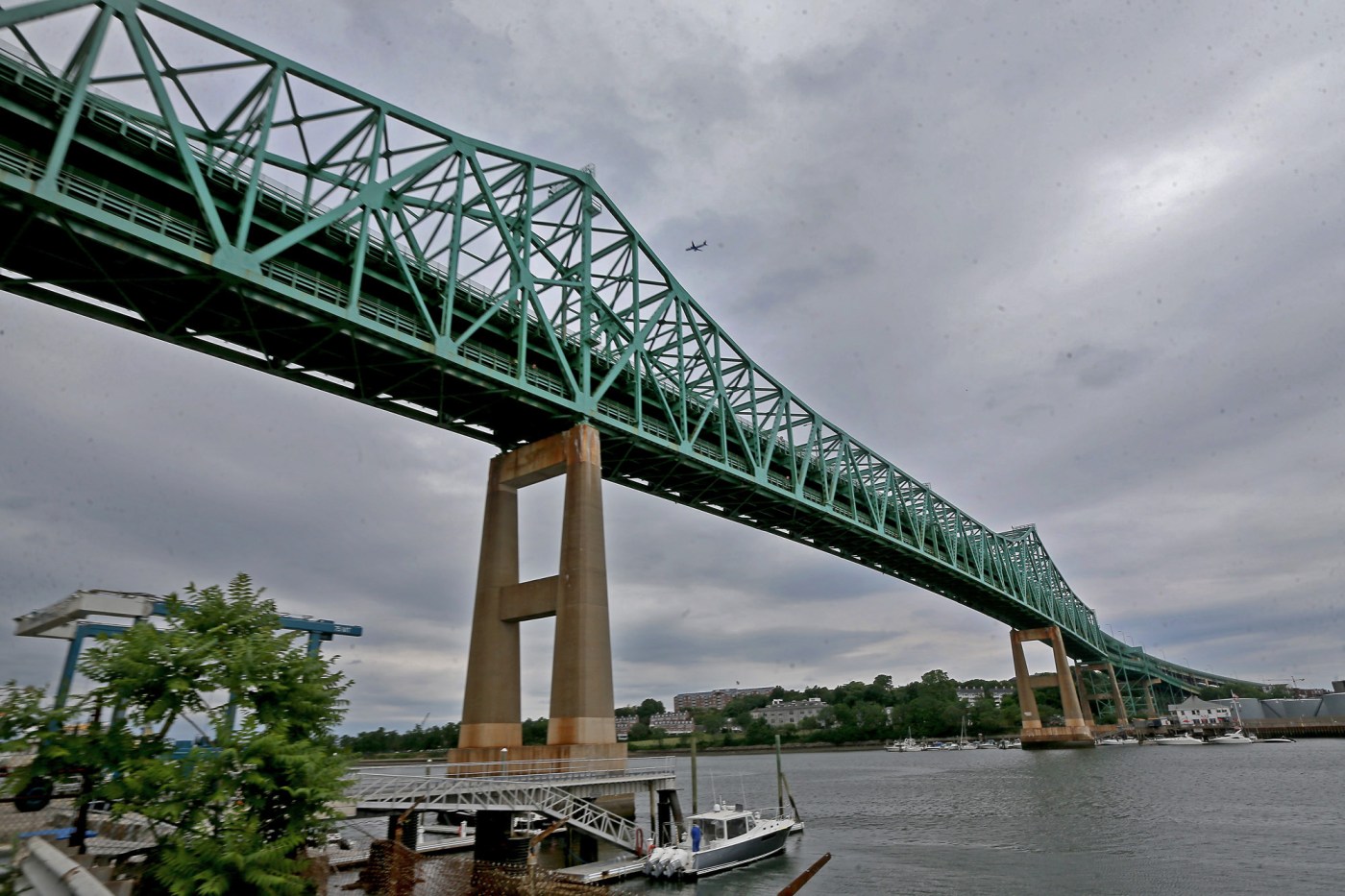
Cape Cod bridges, Tobin Bridge should be checked for collapse risk from vessel strike: NTSB
Several local bridges have made a national list of spans that should be checked for their risk of collapse from a vessel strike.
The Bourne and Sagamore bridges on the Cape and the Tobin Bridge are on the NTSB list as part of the ongoing investigation into the collapse of the Francis Scott Key Bridge in Baltimore.
The National Transportation Safety Board recommended that 68 bridges across 19 states should be assessed to determine their risk of collapse from a vessel collision.
The aging Cape bridges were built in 1935, and agencies are working to replace the spans — which are owned, operated, and maintained by the U.S. Army Corps of Engineers. The project as of last year had received $1.7 billion in federal funding.
Meanwhile, the Tobin Bridge’s southbound upper and northbound lower levels were built in 1950. Recent repair work on the MassDOT bridge has included projects to repair steel, remove old paint and repaint the bridge.
After the catastrophic bridge collapse in Baltimore last year, the NTSB identified the need to safeguard bridges from vessel strikes. The board found that 68 bridges do not have a current vulnerability assessment, so there’s an unknown level of collapse risk from a vessel collision.
“MassDOT received the letter and report last week from the NTSB and is reviewing the NTSB recommendations,” a MassDOT spokesperson said in a statement. “MassDOT intends on enacting any applicable safety measures that NTSB recommends to ensure that the Commonwealth’s bridges remain safe.
“After the Keys Bridge collapse in Maryland in March 2024, Governor Healey immediately convened experts from MassDOT, the U.S. Coast Guard, Massachusetts Maritime Academy, and the Boston Harbor Pilots to discuss the potential for similar risks to the Tobin Bridge and other Massachusetts bridges,” the spokesperson added. “The group confirmed that Massachusetts uses more robust maritime safety practices and that the risk of a similar incident in Massachusetts at the Tobin and other bridges is very low.”
The NTSB found that the Key Bridge — which collapsed after being struck by the containership Dali last March 26 — was almost 30 times above the acceptable risk threshold for critical or essential bridges, according to guidance established by the American Association of State Highway and Transportation Officials.
Over the last year, the NTSB identified 68 bridges that were designed before the AASHTO guidance was established — like the Key Bridge — that do not have a current vulnerability assessment. The report does not suggest that the 68 bridges are certain to collapse.
“We… urge the owners of the 68 identified bridges to calculate whether the probability of a bridge collapse from a vessel collision is above the acceptable risk threshold established by AASHTO,” the NTSB report reads.
“If so, we urge them to develop and implement a risk reduction plan that includes input from the interdisciplinary team, identifies short- and long-term strategies to reduce risk, and considers the safety of the vessels and structures in the waterways,” the report adds.
Related Articles
After Massachusetts fishermen were seen ‘targeting’ white sharks, state looks to better restrict shore-based shark fishing
First right whale mom and calf of the season spotted in Cape Cod Bay: ‘Hope for the species’
Three federal workers fired at Cape Cod National Seashore: ‘We’re really concerned about the lack of staffing’
100-plus sharks tagged off Cape Cod were detected along Maine: ‘White sharks that visit Cape Cod travel well beyond these waters’
Massachusetts police academy leaders suspended amid ‘inappropriate conduct’ concerns
The 68 bridges include the George Washington Bridge, Brooklyn Bridge, Manhattan Bridge, and Golden Gate Bridge.
The vulnerability assessment for bridges look at: the frequency of vessels going under the bridge, the probability that a vessel will go off course, the probability of a bridge collapse once a collision has occurred, and more.
“Safety is always the top priority for the U.S. Army Corps of Engineers,” Army Col. Justin Pabis, the commander of USACE’s New England District, said in a statement. “USACE has received and is reviewing the findings and recommendations of the National Transportation Safety Board’s report on Safeguarding Bridges from Vessel Strikes.
“We value any insights that could help strengthen and secure our nation’s critical infrastructure and improve the safety of communities across the country,” Pabis added. “USACE looks forward to continuing to engage with local, state and federal partners on ways to improve infrastructure safety.”
Since 1994, the Federal Highway Administration has required new bridges be designed to minimize the risk of a catastrophic bridge collapse from a vessel collision, given the size, speed and other characteristics of vessels navigating the channel under the bridge. The Key Bridge was built before vulnerability assessments were required by FHWA.
The NTSB found that if the Maryland Transportation Authority had conducted a vulnerability assessment on the Key Bridge based on recent vessel traffic, MDTA would have been aware that the Key Bridge was above the acceptable risk — and would have had information to proactively reduce the bridge’s risk of a collapse.
The 984-foot Singapore-flagged cargo vessel Dali was transiting out of Baltimore Harbor when it experienced a loss of electrical power and propulsion, and struck the southern pier supporting the central truss spans of the Francis Scott Key Bridge, which then collapsed. Six construction crewmembers were killed and another was injured, as well as one person onboard the vessel.
The Cape Cod Bridges Program will include the replacement of the Bourne and Sagamore bridges, new connections to the local roadway network, and improve multimodal accommodations within the Cape Cod Canal area. MassDOT is starting to have contractors conduct subsurface investigations and vegetation management operations near the Sagamore Bridge — which will require temporary lane/shoulder closures on area roadways.


